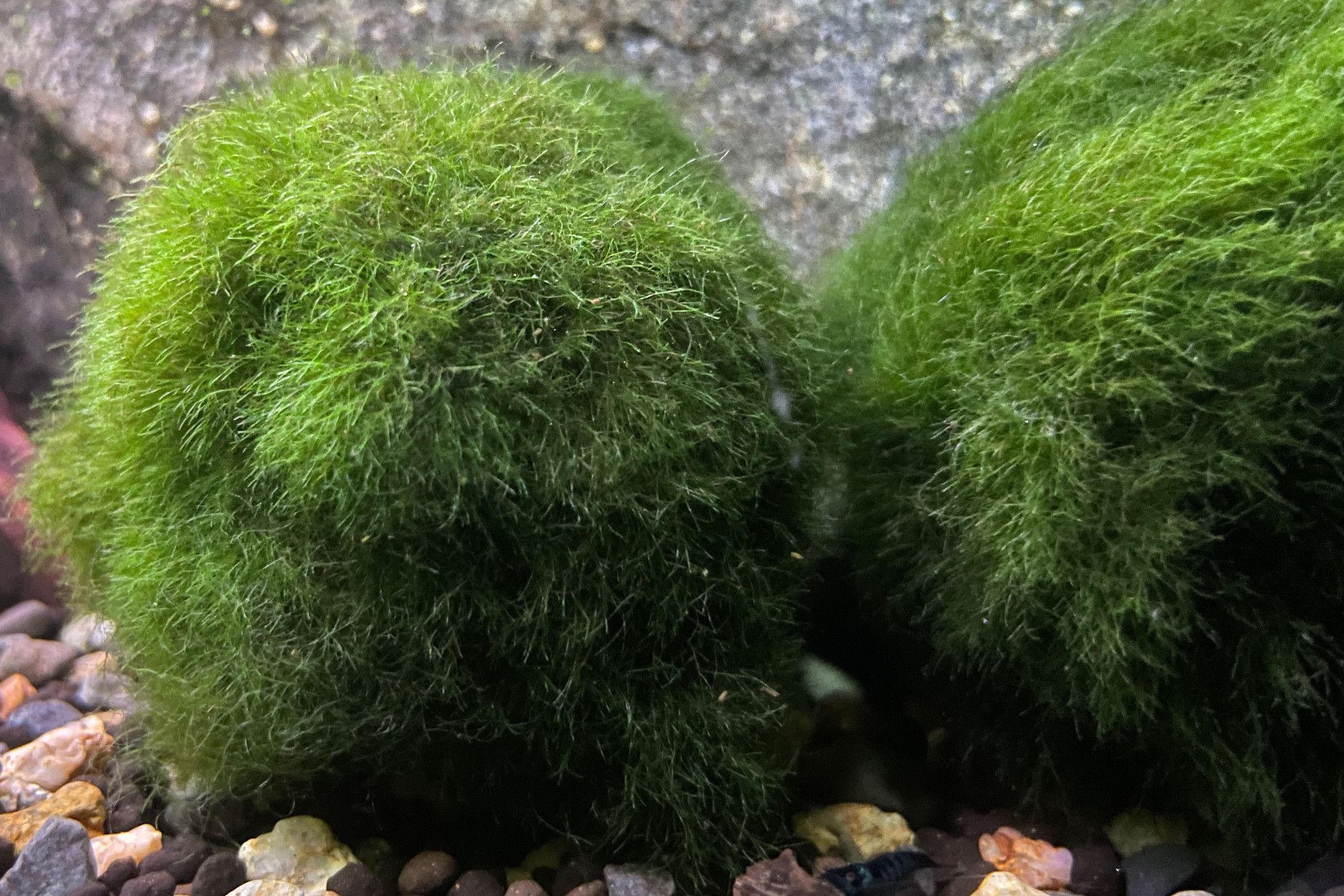General Information
Marimo Ball (Aegagropila linnaei) is a submersed algae plant that originates in Europe, Asia and New Zealand and can be found in brackish water and sweet water lakes.
Aegagropila linnaei are usually sold as balls and therefore called "Marimo balls" in this form. They are especially suitable for tanks with shrimp, because they serve as a natural food resource for them. Marimo balls are also often recommended for decreasing the amount of NO² and NO³ in a tank. The plant itself has no such influence, but the bacteria that live on it do. Marimo Ball is suitable for all tanks and can be placed in the foreground. They have a fuzzy, velvet-like texture and a green color color. Marimo balls perform photosynthesis and the produced oxygen bubbles can make it float to the surface.
It can grow from 4 to 30 cm tall. Since it has a very slow growth rate, it should be combined with fast growing plants in order to avoid algae.
The following sections give an in-depth overview on how to plant, grow and propagate the plant in your tank successfully.
How to plant Marimo Ball
Marimo Ball is somewhat unusual in that it is sold already planted on a ball, so that you don't have to do anything special to plant it in your tank, you just put drop it into the water or place it wherever you like.
Where to place Marimo Ball
Due to its medium size of maximum 30 cm, Marimo Ball is best suited as a foreground plant and can be used in all tanks from nano size upwards.
Marimo balls cannot be attached to a fixed place in the aquarium. They sink to the ground once put into the tank and will move according to the water flow.
How to grow Marimo Ball fast
The overall growth-rate of Marimo Ball is very slow. There are, however, some things you can do to speed up the process further:
- Adding CO² to your tank: CO² injection doesn't have much impact on the growth of Marimo balls.
- Add nutrients to your tank: Adding a little bit of fertilizer to your water can help Marimo balls grow more healthy and maybe even a little bit faster.
- Choose the right spot: Make sure to place your Marimo balls in a spot with low to medium lighting, as it can turn yellow or brown with too much light.
How to propagate Marimo Ball
To propagate your Marimo Ball, you need to take it out of your tank and squeeze it so it loses excess water. Then you cut it in half and sew each half back into a ball shape or tie a thread around each new ball multiple times. Afterwards you can put both balls back into the tank. Make sure to move them from time to time, so that each side gets enough light.
Marimo balls are able to propagate on their own, this doesn't usually happen in small bodies of water like aquariums, though. Natural propagation ocurrs by a Marimo Ball growing a small bump on its surface which can then evolve into a separate Marimo Ball.
Common problems with Marimo Ball
- Yellow Leaves: In case the leaves on Marimo Ball turn yellow, this is a sign for lack of nutrients in the water. We suggest to check the water parameters in order to determine which fertilizer to add.
- Melting Leaves: In case the leaves on Marimo Ball seem to rot or melt, this might also be a sign for lack of nutrients in the water or soil. Other reasons could be too much or too little light. In these cases, it's best to measure your tank parameters and compare them to the data in the "plant characteristic" table in the top right of this page.
- Infections: Discoloration of your Marimo ball may also mean an infection. In that case it's advisable to take the ball out of the tank and rinse it under lukewarm tap water. Afterwards you can bath it in a bit of water with added auqarium salt (not table salt!) for a day or two and put it back into the tank
